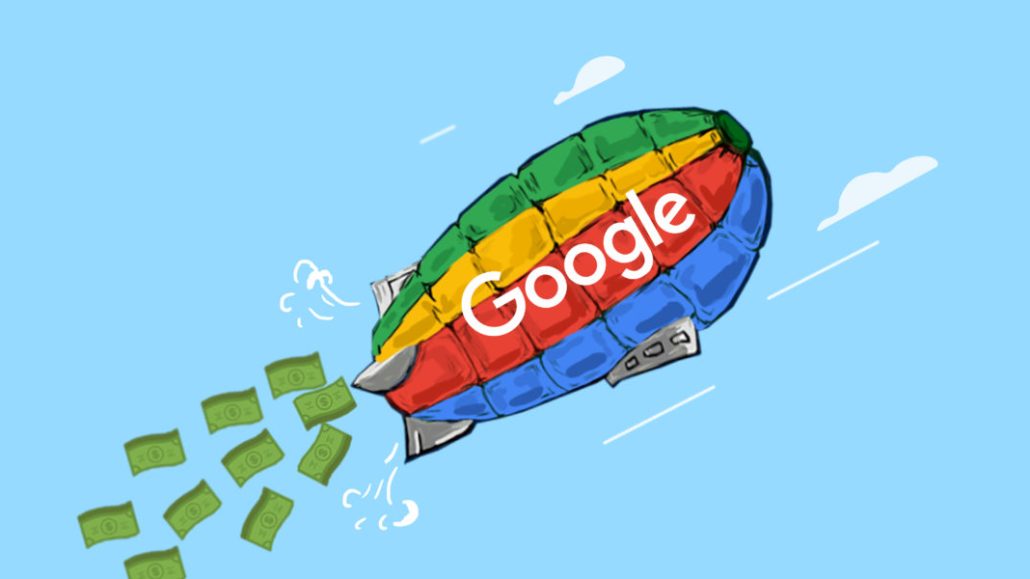Save 50% on a 3-month Digiday+ membership. Ends Dec 5.
Google’s tracking changes could be painful for marketers forced to break their retargeting and lookalike addictions

After years of relying on the third-party cookie to prospect for new customers via retargeting and lookalike targeting, marketers, particularly retailers and e-commerce brands, will need to turn to alternative ways to mine for product sales.
Now that Google will no longer enable individual-level tracking and targeting in inventory it sells on non-Google sites, agency execs say brands will adjust their marketing strategies. Marketers will especially lean on their existing customers, people searching for product- or brand-related topics, as well as Google and other walled gardens where people are logged in and identifiable. And they will need to wean themselves from tried-and-true prospecting methods, such as running ads to retarget people who visit their sites or using lookalike modeling to target ads to people who share characteristics with a brand’s existing customers.
“Prospecting will likely be one of the approaches that will experience a significant change as Google has made it clear that using a propensity-based modeling approach to prospect will not be supported,” said Krystal Olivieri, GroupM’s global svp of data strategy and partnerships. “This creates challenges as this has historically been a proven tactic.”
Retailers, in particular, are heavily invested in using Google to retarget to find new customers, said Tyler Pietz, evp, global data at MightyHive, which helps brands manage and use data. “Frankly, it’s a big crutch for some performance marketers,” he said. Now that Google will no longer allow advertisers to deterministically link a single user to a Google ID request all the way through to conversion, he said, “It’s going to cause some short-term pain.”
On the lookout in walled gardens
Marketers have grown accustomed to the one-to-one nature of lookalike modeling, said Amanda Martin, vp of enterprise partnerships at digital agency Goodway Group. Not only does it allow them to expand the scale of targeted audiences they can reach, it enlivens their first-party data with fresh information, she said. As marketers shift spending away from prospecting the old way, Martin and other agency execs expect Google’s changes could benefit its owned properties as well as those of other walled gardens.
“Brands may be slower to spend more in non-authenticated and [non-] reportable publishers at first,” said Martin. That could shift ad dollars gradually toward media where marketers can still track at an individual level somehow, likely benefiting walled garden platforms such as Amazon and Google, she said.
But there will be opportunities for brands willing to tear themselves away from the walled gardens to find audiences other advertisers might ignore, according to Martin. “We are seeing this with brands who are buying around cookie-less browsers currently,” she said. “A browser like [Apple’s] Safari offers access to extremely valuable audiences; avoiding it is a lost opportunity.”
Of course search — which for many marketers means the authenticated universe of Google search — is another place to find people looking for something in particular. And because Google will continue to enable customer matching in its properties, some money that brands allocate to finding new customers could flow there, said Sam Huston, chief strategy officer at digital agency 3Q Digital. “I think you will see some prospecting dollars move into search,” he said. “It’s a logged-in environment, and we can do that matching so that we can create a real personalized experience in a privacy-safe environment.”
The loyalty squeeze
Google’s decision to kill off third-party cookies in its popular Chrome browser was already going to have a big impact on how advertisers do retargeting and lookalike modeling, said Nii Ahene, chief strategy officer at Tinuiti, which manages ad campaigns on Google and other platforms for advertisers. “The diminishing efficacy of lookalikes is probably the most misunderstood aspect of all of these changes,” he said.
Brands that spend a lot of money on prospecting for new customers will shift some ad dollars over the next three to five years from that toward efforts that drive more loyalty to generate added revenue from existing customers, said Ahene. That means marketers will need to find new ways to segment their CRM data to determine how else they can appeal to those customers, he said.
Other agency and data services execs suggested marketers might spend more on building branded sites, content or mobile apps to stay connected with existing customers.
Tinuiti’s analysis of customer transaction data from some of its smaller brand clients showed that, on average, 50% of revenue came from 16% to 20% of their customers, according to Ahene. For marketers, he said, spending “more time on loyalty, trying to turn a one-time buyer into a repeat buyer, that’s going to be a switching philosophy.”
However, a shift toward loyalty might be more reactionary than long-term, said Goodway Group’s Martin, though she said she expects Google’s tracking changes will influence marketers to evaluate the points of diminishing return they might achieve from current customers.
“It will push brands to be far more diligent on where there’s more juice to squeeze especially if it’s in more authenticated or measurable platforms,” she said.
More in Marketing

Future of Marketing Briefing: The tells and flops that will define Omnicom-IPG mega holdco
The real story will sit in how this newly fused entity behaves — whether it breaks from the patterns that defined both parents or simply scales them.

In Graphic Detail: CMOs at a crossroads of power and proof
CMOs are closing out another year defined by churn and shifting ground.

As Black Friday nears, fake apologies from brands are all over Instagram
Brands have taken to social media in advance of Bliack Friday to ask followers for forgiveness. The catch: They’re apologizing for their products being too good.








